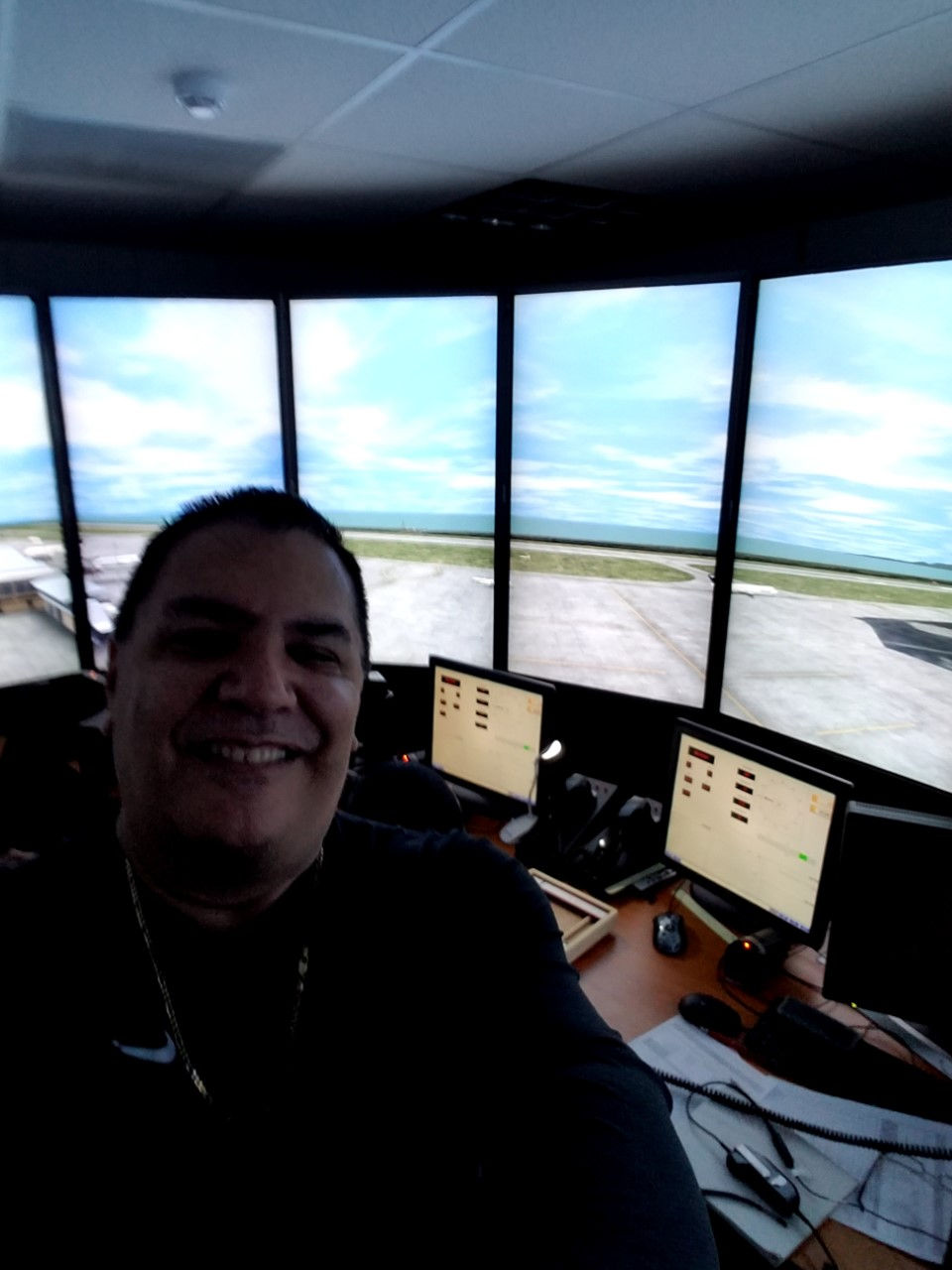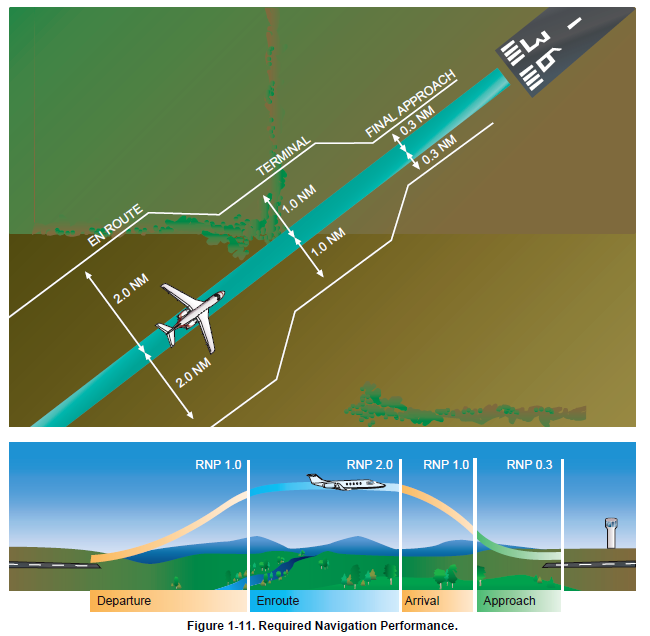WHAT DO THESE PBN - RNAV - RNP TERMS REALLY MEAN?
- Aerospace Systems - Orlando Coronel

- Feb 17, 2021
- 9 min read
Updated: Mar 3, 2021
From: African Air traffic controllers -
Source Facebook - 02/06/2021 - Orlando Coronel - Aerospace Systems


It is PBN Approach or RNP Approach ?
Source Facebook - 02/06/2021
Orlando Coronel - Facebook response

It is PBN Approach or RNP Approach ? (Part 1-A) Let’s begin by saying that Performance Based Navigation (PBN) is not an approach.
Performance Based Navigation ( PBN ) is a CONCEPT that describes an aircraft's capability to navigate using Area Navigation (RNAV) systems.
From the ATC perspective we use RNAV or RNP procedures in Terminal (TMA), approach (final approach segment, and SIDs for departures. Some people and authorities use the term PBN PROCEDURE generically. But the specific way to refer to the procedure is RNAV, RNP or more specifically PNAV, LNAV, LP, LNAV/VNAV, RNP APCH, RNP AR APCH etc.
Before we go deeper, let me comment that; most of our students who come for training are understandably very confused about all those terms. Because the terms in most publications, are intermingled, the subject is extremely broad and complex, and the authors of those technical publications use a lot of abstract terms, which generates confusion, frustration, and lack of progress in that area. That’s the reason why, when we help our customers design those procedures or teach them how to use them to maximize its potential from the ATM perspective, we provide both; an ample dose of explanation and simulation, thus clearing these concepts for once and for all.
Let’s continue… The enablers of the new and revolutionary Airspace Concept are:
Performance Based Navigation which covers; the new concept of navigation, how aircraft and crews are going to behave (perform) within our airspace.
Communications (Pilot-Controller voice or CPDLC communication system and the implementation of new phraseology.
ATS Surveillance – Describes the surveillance methods (procedural, radar, ADS-B, M-LAT)
ATM - Which is the way Air Traffic Control organizes, and separates aircraft based on these new navigational and airspace structural capabilities.
Now... The PBN CONCEPT is comprised of three components:
A. The Navigation Specification- which prescribes the performance requirements in terms of accuracy, integrity, continuity for proposed operations in a particular Airspace. It also describes how these performance requirements are to be achieved
B. The Navaid Infrastructure - Which relates to ground- or space-based navigation aids that are called up in each Navigation Specification. The availability of the navaid infrastructure has to be considered in order to enable the navigation application.
C. The Navigation Application – which refers to the application of the Navigation Specification and Navaid Infrastructure in the context of an airspace concept to ATS routes and instrument flight procedures.
Ok so PBN is a concept… then how does this concept help aircraft navigate with more precision, and autonomy?
Well, PBN is a term that encompasses several types of precision navigation methods optimize airspace navigation and improve operational efficiencies for aircraft.
Area Navigation (RNAV Required and Required Navigation Performance (RNP) are two examples of PBN procedures.
And what is the difference between Area Navigation (RNAV) and Required Navigation Performance (RNP)? Well…
RNAV enables aircraft to fly on any desired flight path within the coverage of ground or space-based navigation aids, within the limits of the capability of the self-contained systems, or a combination of both capabilities. In other words, you can install a simple GPS and follow the published GNSS trajectories and this navigational approach will guide you through the airspace. Of course, the level of precision is less accurate so ATC separation within the Terminal/APP/SID RNAV environment needs to be more careful.
RNP provides RNAV navigational capabilities with the addition of onboard performance monitoring and alerting capability which makes this procedure more reliable, accurate and versatile. A defining characteristic of RNP operations is the ability of the aircraft navigation system to monitor the navigation performance it achieves and inform the crew whether the requirements are met or not met during an operation.
Because Terminal/APP/SID RNP procedures are more accurate, ATCOs may use reduced separation… increasing efficiency, order and safety.
The performance requirements of PBN are conveyed to the operators through navigation specifications. PBN navigation specifications include Advanced RNP (A-RNP), RNP 0.3, RNP 1, RNP 2, RNP 4, RNAV 1, RNAV 2, RNP 10(RNAV 10), as well as RNAV (GPS) and RNAV (RNP) approaches. But we will speak about this on part 2.

I did that explanation with the best intention. However, if you see any error, let me know and we’ll edit it until we achieve total perfection. Please let us know what you think and let’s team up to enhance our understanding about the subject.
Best regards,

Orlando Coronel Director General Aerospace Systems US
Tel/whatsapp +1 786 454 0928
________________________________________________________________________

good explanation.
I think PBN is also used for en route operation.
Right?
Orlando Coronel Yes Wickel, PBN is used for enroute operations.
You are absolutely right.

Enroute PBN is easier because obstacle clearance is less demanding compared to the terminal, approach or departure procedures required navigational performance.
BUT, WHY PBN TERMINAL / APPROACH/ DEPARTURE PROCEDURES ARE MORE CHALLENGING THAN PBN ENROUTE?
Because the closer the aircraft fly from terrain, the more obstacles the approach/departure procedure will have to deal with.
The other element to consider is that terminal/approach/departure operations are typically confined to both, smaller airspaces, and a higher traffic density. therefore, the use of accurate navigation, surveillance capability and separation procedures is essential to keep the efficiency and safety of our system.
Let me put that into a practical and specific explanation.
1. In Europe, our customers have typically used Basic Area Navigation (B-RNAV) since 1998 and is mandated for aircraft using higher level airspace (upper airspace or enroute). B-RNAV requires a minimum navigational accuracy of +/- 5nm (RNP=5) for 95% of the time. But wait a minute… this sounds familiar. Oh yeah B-RNAV almost have the same Required Navigational Performance as the one obtained by a VOR supported navigational structure.
But what about the structure that supports approach and departure operations?
2. European standards for Precision Area Navigation (P-RNAV) are now defined as - a navigational accuracy of +/- 1nm (RNP=1) for 95% of the time. This level of navigation accuracy is used in terminal areas thanks to its higher standard of precision.
3. The final stage of RNAV navigational performance RNP-RNAV combines VNAV with LNAV at an RNP <1, which is expected to be between 0.3nm and 0.1nm for LNAV. This will require suitable augmented GNSS to be the source of position rather than an option for it and will deliver precision approach accuracy in both VNV an LNAV.
Returning to the original point about RNAV or PBN ATS routes. One interesting characteristic of PBN ATS Routes is that; Let us imagine two aircraft flying on the same ATS route in opposite direction, they both would be flying the same EXACT trajectory in opposite direction. I mean, the only existing separation between them would be vertical, which is fine in the perfect world. So, if someone (ATC or crews) makes a mistake, that level of trajectory precision combined with the human error would make the airplanes WAY MORE PRONE to crash into each other.
We live in an imperfect world, and human error may make life-threatening mistakes, so the airspace designers (at least our airspace designers) would typically insert a trajectory difference (offset) for opposite direction traffic into the ATS bidirectional route design. So, whether the ATC controlling facility, or the crews make a mistake, the trajectory offset will help separate the aircraft as the first line defense.
Thanks for your comment.
Best regards,

Orlando Coronel
Director General
AEROSPACE SYSTEMS
Tel/whatsapp +1 786 454 0928
______________________________________________________________________

Facebook 02/18/2021
still the ILS App is the most accurate App ... I think
Orlando Coronel Good observation Raouf
Your observation requires a very complex and broad explanation.
Each application has its strengths and weaknesses
As you know, most of the ILSs installed in our global air navidgation system are ILS CAT I.
GBAS providers offer today Category I (CAT I) precision landing RNAV GBAS Augmentation Systems. They are working relentlessly on developing CAT II/III GBAS for a near future.
So, the short answer is… ILS-RNP hybrid approaches offer the best of both worlds. Both have a high level of precision and combining them provide a mitigation provision (contingency / reversion) operation due to ILS or GNSS outage.
Now based on your observation about system accuracy… one very relevant point of comparison is… what ILS Category (CAT 1/ CAT II/CAT III A, B, OR C) is being compared to a RNP AR APCH.

A relatively long answer.
As you all know, the ILS approach is today the standard precision approach utilized in all major airports. ILS provides both lateral and vertical guidance along the final approach path by means of a localizer and glideslope beam, respectively. The problem with the ILS is that aircraft crews require tactical instructions from ATCOs in order to intercept both glide path and localizer. If this is not done in accurate and timely fashion the aircraft might be led to an unstabilized approach. So, the best way is use a RNP approach overlaid with the ILS procedure.
There is a challenge for the ILS though. The localizer and the glideslope signals are angular and change in width as the aircraft approaches the runway. This, in turn, causes the onboard guidance equipment to have variable sensitivity and requires variable control gains from the pilot or auto-flight system.
In an RNP approach, the lateral and vertical guidance is instead computed by the aircraft Flight Management System (FMS), which usually relies on GPS and inertial reference sensors for lateral navigation and barometric data for vertical navigation (Baro-VNAV). Since the lateral and vertical guidance do not rely on physical ground infrastructure such as in an ILS, the guidance can be provided to the pilot in a linear fashion.
CAT I is less accurate than RNP AR approaches because it relies only on ALTIMETER indications for decision height, whereas CAT II and CAT III approaches use radio altimeter (RA) to determine decision height. The main difference between CAT II / CAT III operations is that Category II provides sufficient visual reference to permit a manual landing at DH, whereas Category III does not provide sufficient visual references and requires an automatic landing system.
Now, let’s see. what are the capabilities provided by RNP AR APCH?
· RNP AR (authorization required) APCH = has a range of lateral accuracy values between 0.1 to 0.3 NM.
· RNP AR Approaches are similar to how CAT III Instrument Landing System (ILS) is approved by Civil Aviation Authorities (CAA).
· RNP AR APCH support curved paths and increase access in mountainous terrain. in an ILS approach, the aircraft must be on the final approach to receive course guidance. In an RNP approach, guidance is provided continuously, including in turns.
· RNP AR APCH support Missed Approach Guidance.
· RNP AR APCH supports System Performance Monitoring and Alerting.
· RNP AR APCH Vertical Accuracy 99.7% of system error in vertical direction.
· The required use of automation in RNP AR APCH minimizes flight technical error (FTE), minimizes crew workload, and puts the crew in a monitoring role where more time can be invested in managing situational awareness. The additional requirement to monitor the aircraft navigation performance in real time as part of the operational mitigation aspect of RNP AR further brings situational awareness into focus.
· When RF legs (Radius to Fix) are used, aircraft are established on procedure profile before turning to final. Early “capture” of the profile could translate into a more stable final approach.

But that’s too much data and is based on different references which is confusing. In the scientific world we should be able to meassure performance to compare and leave subjective judgements aside. So... let’s instead measure both; ILS and RNP AR approach performances.
A comparative analysis of representative (normal) cases of RNP and ILS approaches was performed by the FAA comparing the RMS value of glidepath deviation on final approach of 60 randomly selected approaches:
RESULT OF MEASSUREMENT:
of each type RNP AR APCH approaches had a mean RMS deviation of 36 ft,
while the same metric was 51 ft for ILS approaches.
So this specific research favors RNP Authorization Required approaches in terms of accuracy.
BUT... HOW DO RNP APPROACHES AFFECT THE WAY WE PROVIDE CONTROL SERVICE?
Well, if the RNP is 5 (meaning 5 nautical miles or greater) then we continue to separate aircraft based of conventional standard operational procedures. E.g. 15 GNSS tracks 15 GNSS miles versus VOR 15 radials 15 DME, speed control, step altitude changes, holding, etc.
One important factor from the ATM perspective is that air traffic controllers under RNP Authorization approaches need to adapt to controlling traffic less tactically (less vectoring, less step altitude changes, less speed control) and rely more Air Traffic Flow Management and on the strategic de-confliction of pre-defined routes published in the airspace structure.
A caveat... For many of us critique is uncomfortable because it means to review or examine something critically and our ego does not like critique by default. However, air traffic control is a critical industry and requires critique get situational awareness, detect areas of improvement, and take actions to maximize efficiency and save lives. So I am going to be respectful and straight forward as much as I can with the goal to improve organizational/management and opearational practices.
In my experience, the vast majority of Air Traffic Controllers, lack of a thorough understanding of RNAV operations and have not been adequately trained to provide Air Traffic Management services under RNAV operational environments.
To complicate matters more, SOME regulators and ATM Service Providers are not fully familiar with those RNAV concepts and practices, and hire Airspace Designer Companies or individuals to build RNAV Procedures with the perception that having a published RNAV procedure is enough. But no, it is not enough, Regulators must develop Standard/Contingency/Emergency Operating Procedures, approve separation standards and ATM Service providers must train controllers adequately using a lot of RNAV simulation based on those approved operating procedures and standards.
It is time to integrate criteria, design the new airspace structure, establish the operating stadards, and separation procedures, training the ATCO properly and move into the 21st century firmly, safely and efficiently. We count on your professionalism and ethics to do what is right.
This is a long conversation that will probably continue for years to come. But thanks for bringing the subject up to our discussion. I propose for the next subject matter "MLAT and ADS-B Surveillance systems.
Best regards to all of you,

Orlando Coronel
Director General Aerospace Systems US
Tel/whatsapp +1 786 454 0928



Comments